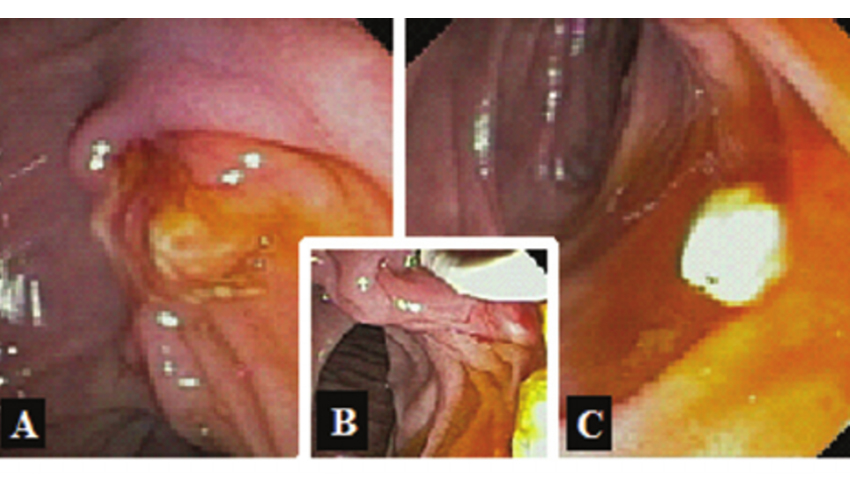ERCP diagnostic procedure uses a special instrument, called endoscope that has a camera at the end to visually examine the internals of your digestive system. The procedure is performed to diagnose diseases of the biliary system, gallbladder, liver and pancreas. Generally, ERCP procedure is considered a low-risk, safe procedure.
Overview
ERCP, an intravenous and diagnostic procedure, is used to examine diseases of the pancreas, bile ducts, duodenum (the upper portion of the small intestine), gallbladder and the liver. Also known as Endoscopic retrograde cholangiopancreatography, ERCP diagnostic test combines x-rays and upper gastrointestinal endoscopy methods to ensure treatment. The person who performs ERCP diagnostic test is called a gastroenterologist.
The liver, gallbladder, pancreas and the stomach are important organs in the body that help in digestion of food and other crucial functions. The liver secretes bile that goes into the gallbladder. After you have a meal, the gallbladder functions through contraction and production of bile through the cystic duct into the bile ducts, and into the intestine. The pancreas produces a digestive juice that travels through the pancreatic duct to the bile duct, and enters the intestine (duodenum).
The best gastroenterologist use ERCP diagnostic procedure to identify any problem in the digestive system. Once the problem is located, doctors start treatments. After performing an ERCP diagnostic test, doctors recommend any of the following treatments which he feels right for the patient:
Gallstone removal- ERCP helps detect and remove gallstones in the bile duct, but a gallbladder stone is treated with surgical procedures.
Stenting- A stent is placed in the pancreatic duct and the bile duct to allow draining. The drainage tube helps to keep the duct open for draining purpose.
Sphincterotomy- A small incision is done in the opening of the bile duct or pancreatic duct to allow pancreatic juice, bile and gallstones to drain out.
Before the Treatment
This is how you should prepare before ERCP diagnostic test:
The top gastroenterologist consults with you to learn about any special condition that you may have like pregnancy, heart conditions, lung conditions and allergies to any medicines.
If a person has diabetes and uses insulin then that should be intimated to the doctor. Your dosage of insulin is adjusted on the day of the test. It is suggested you bring your diabetes medicines on the same day.
If you take blood thinners, inform it to the doctor. You will be prescribed other medications, depending upon your medical condition. Start or stop taking medications only after consultation with the doctor.
Some patients are required to take antibiotics before the procedure, especially if he/she has an artificial heart valve or other medical conditions.
Stop eating or drinking anything at least eight hours before the test.
How it is performed
The diagnostic procedure of ERCP is performed in a few steps:
Step 1: The patient is sedated before the process starts. ERCP is not done under general anaesthesia.
Step 2: A long, viewing, flexible instrument, duodenescope (size of the diameter of a pen), is inserted through the mouth, down the throat, through the food pipe and into the stomach and duodenum.
Step 3: Modern instruments used for the procedure are made of thin fiber-optic bundle that allows light to transmit through the tip of the endoscope into the inside of the stomach. A chip is fitted at the end of the duodenoscope which is connected to a wire, thus allowing transmission of video images to a screen.
Step 4: A small, catherter is passed through the endoscope into the papilla (a small protuberance on an organ) in the pancreatic duct or the bile dict. During the procedure, the gastroenterologist injects a contrast material (dye) to enable taking clearer x-rays of the insides of the pancreatic duct and the bile duct.
Step 5: More instruments are passed through the other opening channels in the instrument to perform biopsies. The gastroenterologist inserts metal stents or plastic stents to clear any obstructions in the ducts caused by scarring or cancer. If required, the gastroenterologist performs cuts by using electrocautery heat rays.
Step 6: While taking images of the insides of the stomach and duodenum, the best gastroenterologist tries to find any abnormal growth, diseases, infections, inflammations, etc., inside the stomach. If anything unusual is spotted, the patient is immediately sent for further examinations and treatments.
Recovery
After ERCP diagnostic test is over, you are transferred to an observation room and kept under observation for 1-2 hours. It is normal to feel a certain degree of soreness and swallowing problems in the throat. Lozenges help to relieve the pain to a great extent.
Since you are sedated during the procedure, it is advised to bring someone who can stay through the entire time of the test and drive you home.
It is recommended to put a stay at any place close to the hospital, so that in case of emergency you can rush quickly to the emergency room for assessment.
It is advised not to drive or operate any heavy machinery for at least 8 hours after the procedure. ERCP diagnostic test recovery time is quick and takes a few hours to an entire day. However, in case of persistent pain and uneasiness, refer to the doctor immediately.






Leave A Comment
You must be logged in to post a comment.